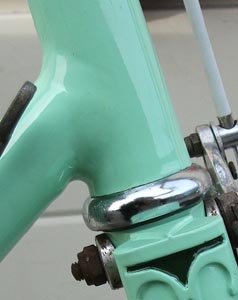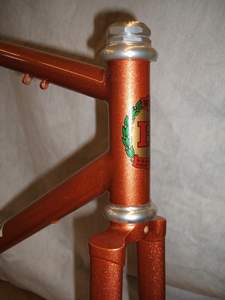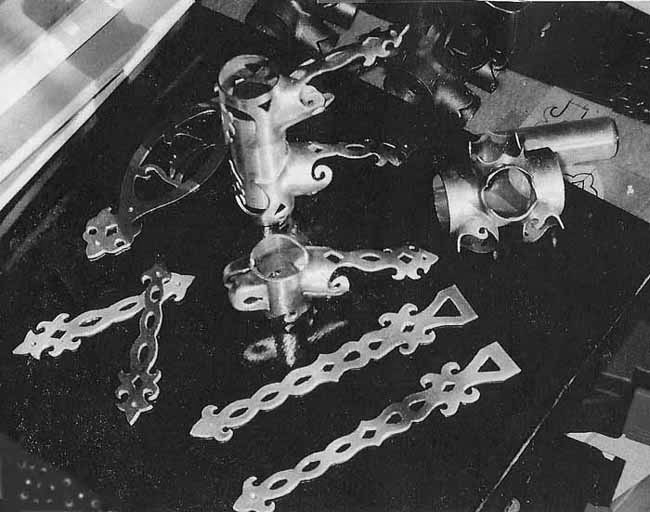Brazing and welding frames built with Reynolds tubing
Posted: Monday 21st September 2020
Regarding the joining of Reynolds tubes to construct a cycle frame, the difference in the definition of brazing, bronze-welding, fillet-brazing, welding etc has been discussed several times before and consensus on meaning seems to have been reached as follows:
Brazing is the process of melting a silicon-bronze – i.e. brass/zinc with traces of silicon rod and drawing it by means of heat in its liquid state, and the process of capillary flow through a tight joint/space, such as that between a well-fitting tube inside a lug.

Bronze welding is the process of building up a bead of material this ‘bronze’ material around the junction of two or more tubes, as seen on lugless frames. The name ‘bronze-welding’ is a misnomer because true welding actually uses the process of fusing the parent metal, but the term is used to differentiate it from brazing because a bead/fillet is produced as in true fusion welding. The same silicon-bronze rods are used, but often with a different flux of the non-fuming type, but often the rod will be changed for a nickel-bronze one that has a slightly higher melting point and better mechanical properties.
Welding, in the real sense relies on the parent metal being melted and the joint being filled with a rod made of metal similar, but not quite identical usually, to the metal being welded. These techniques require the flame of the gas torch, usually an oxy-acetylene one, to be set differently. The setting can be a neutral one as for fusion welding – where the two gases are burned in the same proportions, or an oxydising flame used for brazing and bronze-welding which needs an excess of oxygen, or a reducing/carbonising flame that has an excess of acetylene – a flame setting that has no place in frame-building.

Alloy steels such as Reynolds 531 are known to become what in the UK is known as ‘hot-short’ at higher temperatures, that is, they can become brittle and break up. Anyone who has tried to remove a stubborn bent tube from a lug will know this problem. Presumably the temperature required for fusion welding could cause the hot-short phenomenon.
Another problem of course with brazing or welding Reynolds, and I suppose most other alloy steel tubing, is the danger of using the wrong flame setting. The reducing flame, the one with the surplus of acetylene, adds carbon to the steel thereby risking causing embrittlement that would/could lead to cracks and breakages. So far, so good.
Currently I am doing some light restoration work on the pannier frame welded on to one of the REYHAND touring frames that I own. Built in the 1930s of Durifort DB tubing, it is incredibly light, particularly for a 24″ frame with an integral pannier frame. Reiss who built these frames actually fusion-welded…not bronze-welded them.
He had tremendous torch-wielding skills to enable him to fuse very fine tubes together, and to thicker tubes such as the two-plate fork crown, the bottom-bracket sleeve and the fork drop-outs. I wonder, how did he manage to fusion-weld these frames without provoking ‘hot-short’ or embrittlement…or even just burning holes in the thinner tubes? I can only assume that these dangers exist particularly with Reynolds tubing because it is a manganese-moly steel, and that Durifort does not suffer from the same dangers because it is a chro-moly steel. However, I do not intend to experiment to find out!
Posted: Monday 21st September 2020
This article appears in the following categories.
Upcoming Events
Whether you are looking for a gentle social meet up, or a 100-mile ride browse the community’s upcoming events and plan your next weekend outing.
